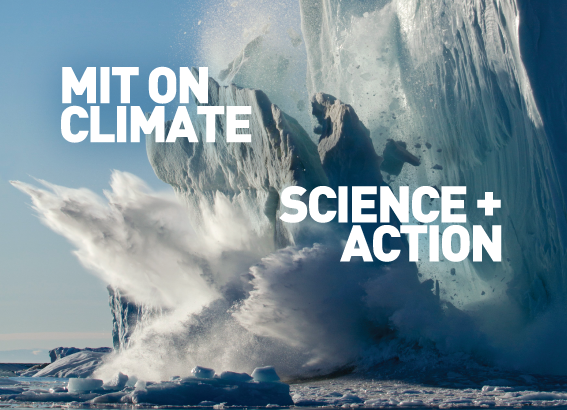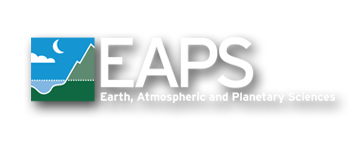All News
-
Featured Stories, MIT, MIT EAPS, News | November 13, 2017
Texas’ Odds of Harvey-scale Rainfall to Increase by End of Century
Study finds state’s annual risk of extreme rainfall will rise from 1 to 18 percent. -
Featured Stories, MIT, MIT EAPS, News | November 12, 2017
Visualizing Climate Science at HUBweek
Art and augmented reality brings MIT – For a Better World to life -
Featured Stories, MIT, MIT EAPS, MIT News, News | November 7, 2017
A Brief History of Environmental Successes
This year, the Lorenz Center invited Susan Solomon to give the 7th annual John Carlson Lecture at the New England Aquarium on October 26th, 2017. Professor Solomon talked about past environmental challenges that were successfully overcome and how climate change, as perhaps “the mother” of all environmental challenges, compares. -
MIT, News | October 31, 2017
On the Fifth Anniversary of Superstorm Sandy, a Look at 2017
Professor Kerry Emanuel speaks with Living Lab Radio/WGBH about Superstorm Sandy and how the 2017 hurricane season warrants action. -
Featured Stories, Joint Program on the Science and Policy of Global Change, MIT, MIT EAPS, MIT News, News | October 23, 2017
Noelle Selin: Tracing Toxins Around the World
Atmospheric chemist takes on pollutants and the global treaties written to control them. -
MIT, MIT EAPS, News | October 16, 2017
Environmental Successes: How We Can Make Them Happen Again
Atmospheric scientist Susan Solomon speaks with Living Lab Radio/WGBH about our track record of environmental success stories that deserve more attention. -
Featured Stories, MIT, MIT Mechanical Engineering, MIT News, News | September 22, 2017
Technique Spots Warning Signs of Extreme Events
Method may help predict hotspots of instability affecting climate, aircraft performance, and ocean circulation. -
Featured Stories, MIT, MIT EAPS, News | September 21, 2017
What Do Hurricanes Harvey and Irma Portend?
MIT prominent meteorologist and climate scientist Kerry Emanuel discusses projections of changing hurricane activity over the rest of this century and what such projections tell us about how the probabilities of hurricanes like Harvey and Irma have already changed and are likely to continue to do so. -
Featured Stories, MIT, MIT EAPS, MIT News, News | September 21, 2017
Mathematics Predicts a Sixth Mass Extinction
By 2100, oceans may hold enough carbon to launch mass extermination of species in future millennia. -
MIT, MIT EAPS, News | September 11, 2017
Old rain, New data: Past Climate Change in the Southeastern US
What is so important about 6,000-year-old rain? MIT-WHOI Joint Program graduate student Gabi Serrato Marks explains what rain in the geological record can tell us about paleoclimates and how scientists may be able to see evidence of Hurricane Harvey in deposits. -
Featured Stories, MIT, MIT EAPS, News | September 7, 2017
“EarthArt” exhibit at Hayden Library
See your art and data displayed on the illuminated iGlobe. -
Featured Stories, MIT, MIT CEE, MIT EAPS, News | September 5, 2017
Team Gathers Unprecedented Data on Atmosphere’s Organic Chemistry
Colorado forest study provides clearest-ever picture of gases released into the atmosphere and how they change. -
Featured Stories, MIT, MIT EAPS, News | September 1, 2017
ClimateX: How Climate Puzzles of the Past Point us to the Future
Paleoclimatologist and Associate Professor in the Department of Earth, Atmospheric and Planetary Sciences, David McGee, speaks with ClimateX's Climate Conversations team about Earth's climate changes in the last half million years, our dependence upon climate stability and David’s role in Terrascope, a freshman learning community at MIT. Additionally, He explains how his team tracks historical changes in the Earth’s climate. -
Featured Stories, MIT, MIT EAPS, News, WHOI | August 28, 2017
Strength of Global Stratospheric Circulation Measured for First Time
Estimate will help gauge hang time of greenhouse gases, water vapor, and ozone in upper atmosphere. -
MIT, News | August 15, 2017
Does Climate Change Cause Extreme Weather Events?
It’s a challenge to attribute any one storm or heat wave to climate change, but scientists are getting closer. MIT Joint Program on the Science and Policy of Global Change Deputy Director C. Adam Schlosser comments in Smithsonian.com. -
Featured Stories, MIT, MIT CEE, News | August 2, 2017
Deadly Heat Waves Could Hit South Asia This Century
Without action, climate change could devastate a region home to one-fifth of humanity, study finds. -
MIT, MIT EAPS, News | August 1, 2017
Curiosity and Climate Science
In a new video from ClimateX, MIT's Professor of Atmospheric Science Kerry Emanuel speaks about the origins of climate science and stresses the importance of climate science research, imploring talented students to get involved in what he considers to be an underpopulated field. -
Featured Stories, MIT, MIT EAPS, MIT News, News | July 31, 2017
Underground Magma Pulse Triggered End-Permian Extinction
Study ties specific interval during an extended period of volcanism to Earth’s most severe mass extinction. -
MIT, MIT CEE, MIT EAPS, News | July 28, 2017
Dara Entekhabi Awarded the 2018 David and Lucille Atlas Remote Sensing Prize
For scientific and technical leadership in providing remote sensing data and in their use to address basic questions in hydrological science. -
Featured Stories, MIT, MIT EAPS, News | July 25, 2017
The Sticky Intertropical Convergence Zone
Ocean circulation coupled to changes in trade winds efficiently damps ITCZ movement to transport heat across the equator.




